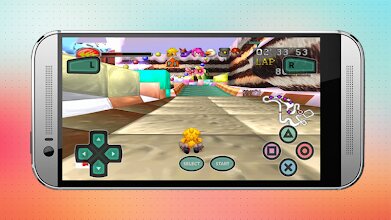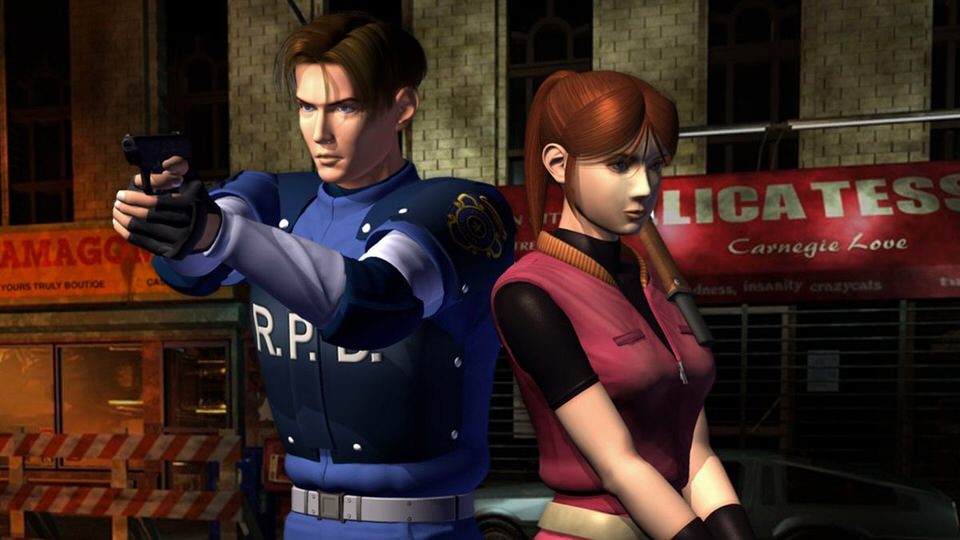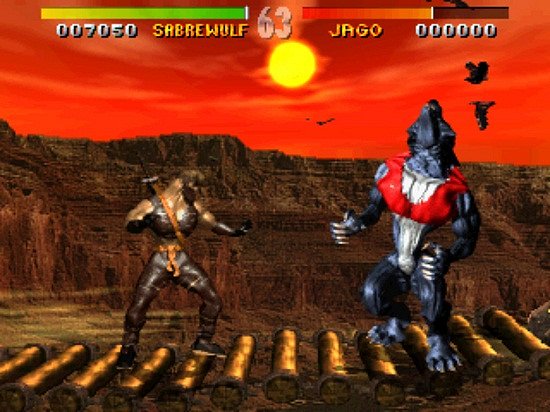The Raspberry Pi is a tiny device, but it’s surprisingly powerful – especially when you compare it to the bulky computers of the past. Take video game systems, for instance: while modern ones far outstrip the Pi, older models like the Nintendo Entertainment System or Sega Genesis are weaklings in comparison. That makes the Raspberry Pi more than capable of playing retro games, and the folks behind the RetroPie project have developed a way to help you do exactly that. Installing RetroPie on your Raspberry Pi will give you the ability to emulate a ton of old video game systems, essentially turning your Raspberry Pi into the ultimate retro gaming machine. Here’s how to play retro games on the Raspberry Pi with RetroPie.
Retro games on the Raspberry Pi: What you can play

The full list of emulators included with RetroPie is absolutely massive. Here’s a link to the full list – we’ve included some of the highlights below, but there are far more than just these. Suffice it to say that if you want to play retro games on the Raspberry Pi, you’ve come to the right place.
And the saved games even work with BLEEM, and PSXPro. PSX MC Manager: A quick and easy utility for managing memory cards for FPse and psx4droid. Easily convert DexDrive saves to work in either emulator, just open in PSX MC Manager and save. The process is automatic. Choose your preferred emulator format in the Preferences.
- FreeMcBoot is a very useful mod. Without it you can only play games off DVD, but with FMCB you can play the off DVD,USB,Ethernet and HDD. Plus you can install many homebrew apps like emulators for Nintendo consoles or Gameboy, or video players, hacks, like GameShark, and many other.
- Feb 05, 2020 The original PlayStation, also known as PSX or the PS1, boasts an amazing array of games. The PS1 is long out of date, but the games are still lots of fun to play. Thankfully, if your favorite PS1 games are no longer available, you can still play them on your PC. A PlayStation 1 emulator brings your favorite PS1 games back to life.
- Dec 31, 2017 Create “.cue” Files for Your PSX Games. When you rip a PS1 game, you should always make sure that you do it into the BIN or BIN/CUE format. This will essentially divide the output files into the BIN file, which stores most of the game data, and the CUE file, which is what Retroarch searches for when you scan for PS1 games.
- Difficulty: 1 (very easy) This method may be super easy, but there’s a catch. Unfortunately, it’s only compatible with certain disc drives, so it’s likely your PC won’t be able to read GameCube or Wii games. Here’s a link to a list of drives that are compatible. Needed: – PC with compatible disc drive Required Program (any of these).
Nintendo
- Game Boy
- Game Boy Advance
- Game Boy Color
- Nintendo 64
- Nintendo DS
- Super Nintendo
- Nintendo Entertainment System (NES)
Sega
- Dreamcast
- Game Gear
- Genesis/Mega Drive
- Master System
- Sega 32X
- Sega CD
- Sega Saturn
- SG-1000
Sony
- PlayStation (PS1)
- PlayStation 2
- PSP
You’ll also get direct ports of popular games like Cave Story and Doom.
How to play retro games on the Raspberry Pi with RetroPie
In order to show you how to play retro games on the Raspberry Pi with RetroPie, we have to cover a few different steps. First, you’ll have to install RetroPie, which is a kind of operating system that includes EmulationStation – which is itself a powerful group of emulators.
Next, you’re going to have to tweak a few settings, including Wi-Fi and controller settings.
Then, you’ll need to add ROMs. Emulators run video game systems as virtual machines within a computer, and ROMs are the game files themselves – the cartridges or discs to the emulators’ systems, if you will.
We’ll cover it all below.
What you’ll need
As is typical with these projects, you’ll need a Raspberry Pi, a power source, a monitor/TV and a way to connect to it, and peripherals (like a keyboard and mouse) for set-up. You’ll also need a few other things:
- A microSD card (at least 8 GB)
- A USB game controller
- A Windows or Mac computer with a place to plug in your SD card
How to install RetroPie
Installing RetroPie has always been pretty easy, but it’s easier than ever now. If you did this project a few years ago (like I did), you’ll find it’s only gotten simpler.
Step 1: Download RetroPie and unzip the disc image
You can find the latest version of RetroPie here. Download it to your computer. It will be compressed in .gz format – unzip it with WinZip or a similar program so that it ends with just .img.
Step 2: Extract the RetroPie disc image to your microSD card
What you just downloaded and unzipped was the RetroPie disc image. Next, you’re going to extract it to your microSD card. With Windows, this is super simple:
- Download Win32 Disc Imager
- Open Win32 Disc Imager
- Select the .img file and the correct disc (make sure it’s your microSD card!)
With Mac, it goes like this:
- Download RPI-sd card builder
- Open RPI-sd card builder
- When prompted, choose the disc image
- When prompted, select your SD card (make sure you’re writing to the right place!)
- Hit “OK” and enter your password. The program should do the rest.
Step 3: Put the microSD card in your Raspberry Pi and boot it up
That was easy, right? Have your USB controller plugged in, because you’ll be setting it up next.
How to set up RetroPie after installation
Now that your Raspberry Pi is running RetroPie, you’re going to want to set up your internet connection (we’ll need it to get your games moved over and to install any future RetroPie updates) and your gaming controller.
Step 1: Set up your controller

If RetroPie detects a USB controller, it’s going to want you to set it up before you do anything else. To set a button value, just touch the button. The menu will move on to the next value as soon as you enter something for the first. If you’re using a simple controller, you may end up double-assigning certain buttons (L1 and L2 both to your only L button, for instance). If you’re looking to emulate more recent systems, you may want to opt for a controller with all the buttons you need – like a PlayStation 4 controller, for instance, which is what I used.
Step 2: Set up Wi-Fi
Head to the settings menu and scroll down to the Wi-Fi option. You’ll be able to choose your wireless network and enter your password. Connecting to Wi-Fi has gotten way easier since the early days of the Raspberry Pi and RetroPie.
How to add emulators and play retro games on the Raspberry Pi with RetroPie
Your Raspberry Pi is now completely set up, but you won’t see any emulators. That’s because RetroPie automatically hides emulators that you don’t have any ROMs for. You have a way to play retro games on the Raspberry Pi, but you don’t actually have any retro games on your Raspberry Pi. So let’s add some games by adding some ROMs!
ROMs are a little bit of a legal gray area, but you’re generally supposed to only download ROMs for games that you already own in a physical media form. With that said, we’ll let you get the ROMs onto your computer yourself. Once they’re there, here’s how you’ll get them over to the Raspberry Pi.

Option 1: Use an external hard drive or USB drive
This is a super-simple way to get your ROMs to your RetroPie. Just put them all in a folder called retropie and put that folder on a USB storage device. Plug it into your Raspberry Pi, and you’re good to go.
Option 2: Transfer files over your network
Using your network to get ROMs to your RetroPie used to be a (mild) pain, but the newer versions of the system have made it insanely easy. Go to your file manager on your computer and look for shared folders. If your RetroPie is connected to your network, you should see a folder called RETROPIE (if it doesn’t show up, type the address into the address bar directly: RETROPIE for Windows or smb://RETROPIE for Mac).
You will have to log in to access the folder. The default credentials are username: raspberry and password: pi.
Once you’ve spotted it, just drag your ROMS on into the folder. Done!
When you own multiple consoles it’s always a pain in the butt to share games, especially when they’re physical games. This is where making backups of your games become quite handy especially if you have a jailbroken console.I believe that you should be able to share your own games that you own with multiple consoles in your own home instead of you buying 2 or 3 of the same game so everybody can play. Today we’re going to talk about how to backup your physical PS4 games and convert them into PKG files so you can install them on your jailbroken PS4.
You’re going to need to have a PS4 on firmware 4.05, 4.55 or 5.05 to be able to do this. Next, you will be needing the dumper Payloads. Plus two other programs and a lot of space on a USB thumb drive or USB hard drive, it just depends on the game as some can be as little as 10g and some can be as big as 45g.
The whole process is relatively very simple but can be time-consuming especially if you don’t have any USB 3.0 thumb drives or hard drives.
Easily Rip Ps1 Games On Computer
Downloads:
I use Al-Azif PS4 exploit host to host all the payloads available, plus it makes it very convenient to have them all right there instead of manually injecting them. Once you have this all set up on the PS4 and your computer, you’ll be ready to start dumping your games.
First, we’re going to go ahead and insert the game into the PS4. Then you’re going to go to the settings and go to guide then the host will automatically load the webpage with all your payloads. Pick the firmware your PS4 is on either 4.05, 4.55, or 5.05, after that there you will see the dumper. Use your joystick and pick dumper, the payloads will automatically load and it will begin the process.
If you don’t have a USB drive plugged into the PS4 it will remind you to put one in and the same goes for the game you want to dump if you didn’t put it in. Now go back to the main menu and launch the game that you want to dump. (It will also remind you to do this too). It will begin to start the process and update you with the percentage it has copied to the USB drive. Now, this process could take a while depending on how big the game is. It will notify you once it’s done and you will have a complete dump of the game but it’s still no good to us as we need to convert it to PKG to install it.
This is where the two other programs called GENGP4 and Fake PKG Generator for PS4, come in hand. Take your USB drive that has the game on it and plug it into your PC.
Use the program called GENGP4 this is going to set it up it for you too easily converted into a PKG file with Fake PKG. Click on the folder icon and load the game you justed ripped, then click on generate GP4 and once done click on save GP4 and name it whatever you want just make sure you save it somewhere you won’t forget, to make it easy just save it to the desktop.
Once that’s done you’re going to use Fake PKG Generator and click on file then load the new project file you just made.
Easily Rip Ps1 Games On Ps4
Now click on the build button and it will bring up the options just leave them alone and go down to the bottom and tell it where you would like to save it to. Then click on the build button and it will start to make your pkg file. (You may get some errors but that is normal)
Now that it’s done making the pkg file its time to install it on the PS4, make sure you take out the game you just dumped and delete it from the PS4 before installing the PKG file. Once again go back to the setting on the PS4 and go the guide and load the Homebrew enabler to be able to use the debug settings and install the PKG file.
Ps1 Games List
Once in the debug setting, go to game, then the package installer and there you will see the PKG file you made, just highlight it and press X to install.
That’s it, now you’ll be able to play your games without the disc and share it with your other PS4.